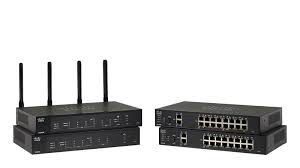In today's digital age, streaming video has become ubiquitous, both for personal and professional use. Whether it's video conferencing, online meetings, 4K movie streaming, or live video broadcasts, a reliable and high-performance network is paramount. This white paper explores the critical role of business routers with Wi-Fi in supporting seamless streaming video experiences.
Business Routers with Wi-Fi for Streaming Video: A Comprehensive Guide
1. Introduction
In today's digital age, streaming video has become ubiquitous, both for personal and professional use. Whether it's video conferencing, online meetings, 4K movie streaming, or live video broadcasts, a reliable and high-performance network is paramount. This white paper explores the critical role of business routers with Wi-Fi in supporting seamless streaming video experiences.
2. Key Considerations for Streaming Video
- Bandwidth Requirements:
- High-definition (HD) streaming typically requires at least 3 Mbps per stream.
- 4K streaming demands significantly higher bandwidth, often exceeding 25 Mbps.
- Multiple concurrent streams further increase bandwidth demands.
- Latency: Low latency is crucial for real-time video conferencing and online gaming to minimize delays and ensure smooth interactions.
- Jitter: Consistent and low jitter is essential for preventing audio/video synchronization issues and ensuring a smooth viewing experience.
- Quality of Service (QoS): Prioritizing streaming traffic over other network traffic (e.g., downloads, file transfers) can ensure consistent performance.
3. Business Router Features for Optimal Streaming
- High-Speed Wi-Fi:
- Wi-Fi 6 (802.11ax): Supports faster speeds, higher capacity, and improved efficiency, making it ideal for demanding applications like 4K streaming and video conferencing.
- Dual-Band or Tri-Band Wi-Fi: Provides multiple Wi-Fi bands to reduce congestion and improve performance, especially in environments with multiple devices.
- MU-MIMO (Multi-User MIMO): Allows the router to communicate with multiple devices simultaneously, improving overall throughput and efficiency.
- Beamforming: Focuses Wi-Fi signals towards connected devices, improving range and reducing interference.
- Gigabit Ethernet Ports: Provides high-speed wired connections for devices such as gaming consoles, streaming devices, and smart TVs.
- Quality of Service (QoS): Allows prioritization of streaming traffic over other network traffic to ensure smooth and uninterrupted video playback.
- Gigabit Ethernet WAN Port: Provides a fast and reliable connection to the internet service provider (ISP).
- Advanced Security Features: Includes features such as firewalls, intrusion detection/prevention systems (IDS/IPS), and content filtering to protect the network from cyber threats.
- Easy Setup and Management: User-friendly web interfaces or mobile apps for easy configuration and management of the router.
4. Selecting the Right Business Router
- Assess your needs: Determine the number of devices that will be connected to the network, the expected bandwidth demands, and the specific streaming applications that will be used.
- Consider your budget: Choose a router that meets your needs and fits within your budget.
- Read reviews and compare features: Research different router models and compare their features, performance, and user reviews.
- Look for reputable brands: Choose routers from reputable brands known for their reliability and performance (e.g., Netgear, TP-Link, Ubiquiti, Cisco Meraki).
5. Optimizing Network Performance
- Proper Placement: Place the router in a central location to ensure optimal Wi-Fi coverage throughout the building.
- Avoid Interference: Keep the router away from sources of interference, such as microwaves and cordless phones.
- Use Ethernet Cables: Connect devices that require high bandwidth (e.g., gaming consoles, streaming devices) to the router using Ethernet cables for the best possible performance.
- Regularly Update Firmware: Keep the router's firmware updated to ensure optimal performance, security, and compatibility with the latest devices.
6. Conclusion
A high-performance business router with Wi-Fi is essential for delivering a seamless streaming experience. By carefully considering factors such as bandwidth requirements, Wi-Fi standards, and network security, businesses can choose the right router to meet their specific needs and ensure a smooth and enjoyable streaming experience for all users.
References:
- Netgear: https://www.tp-link.com/
- Ubiquiti: https://meraki.cisco.com/
- Wi-Fi Alliance:
Disclaimer: This white paper provides general information and recommendations. The specific router and configuration will vary depending on individual needs and network requirements.
